Our grandmothers wore hairstyles that spoke volumes about their era and personal style. These hairdos were more than just fashion statements; they were expressions of identity, social status, and cultural heritage.
Each style tells a story of its own, reflecting the values and trends of the time. Let’s explore seventeen classic hairstyles that our grandmothers wore with pride and uncover what they meant.
From elegant updos to playful curls, these styles continue to inspire and captivate the world of fashion today.
Victory Rolls
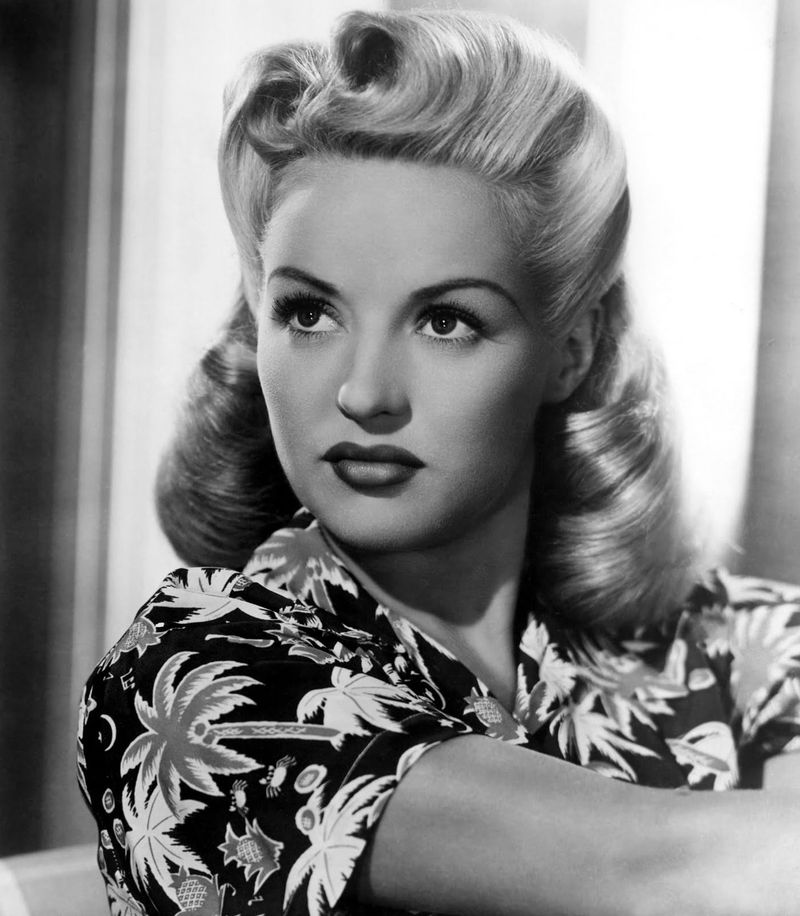
Victory Rolls became popular during the 1940s, embodying the spirit of triumph and resilience. This hairstyle features voluminous rolls atop the head, often paired with red lipstick and pin-up fashion.
It was a nod to women’s empowerment during World War II, as many took on roles traditionally held by men. The style was also a practical choice, keeping hair neat while working in factories.
Today, Victory Rolls evoke a sense of nostalgia and timeless elegance. Did you know? The name ‘Victory Rolls’ was inspired by an aerial maneuver used by fighter planes. This style truly symbolized victory and strength.
Beehive
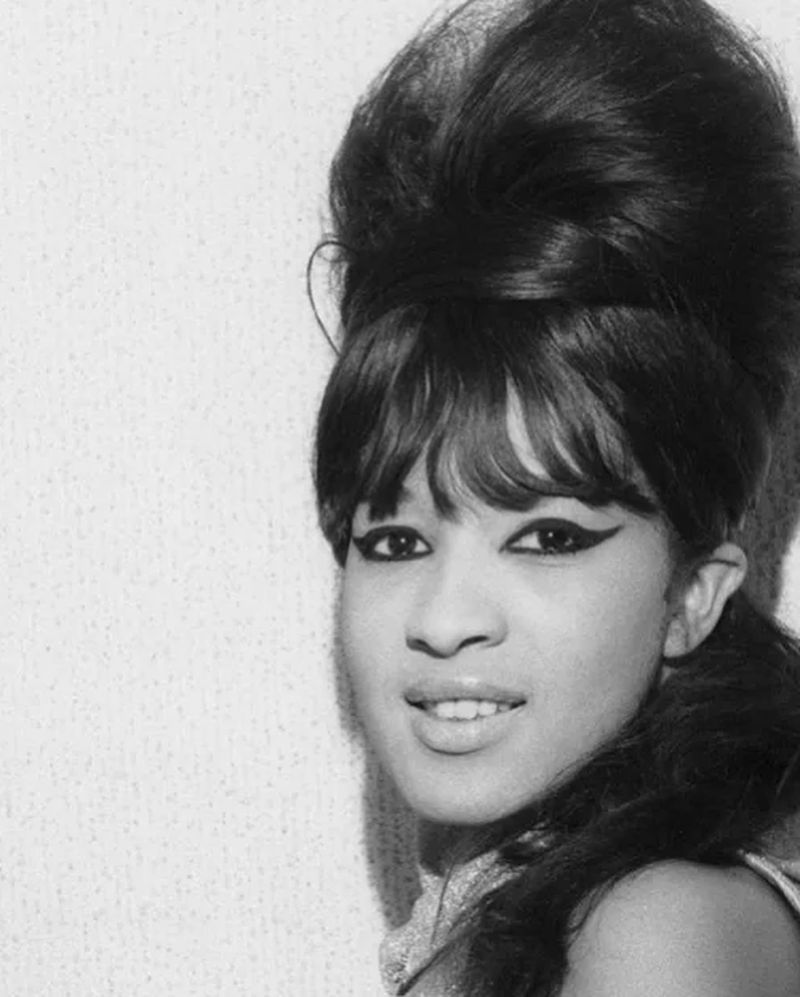
The Beehive, reaching its peak in the 1960s, was a towering structure of teased hair. This daring style mirrored the boldness of the era, symbolizing rebellion and liberation.
Seen on icons like Audrey Hepburn and Brigitte Bardot, the Beehive was often accessorized with ribbons or flowers. Its height and volume made it a favorite for special occasions.
The Beehive was more than just a hairdo; it was a statement of confidence and individuality. Fun fact: The Beehive was created by Margaret Vinci Heldt of Chicago, who wanted to design a style that would hold its own against the new trends of the time.
Finger Waves
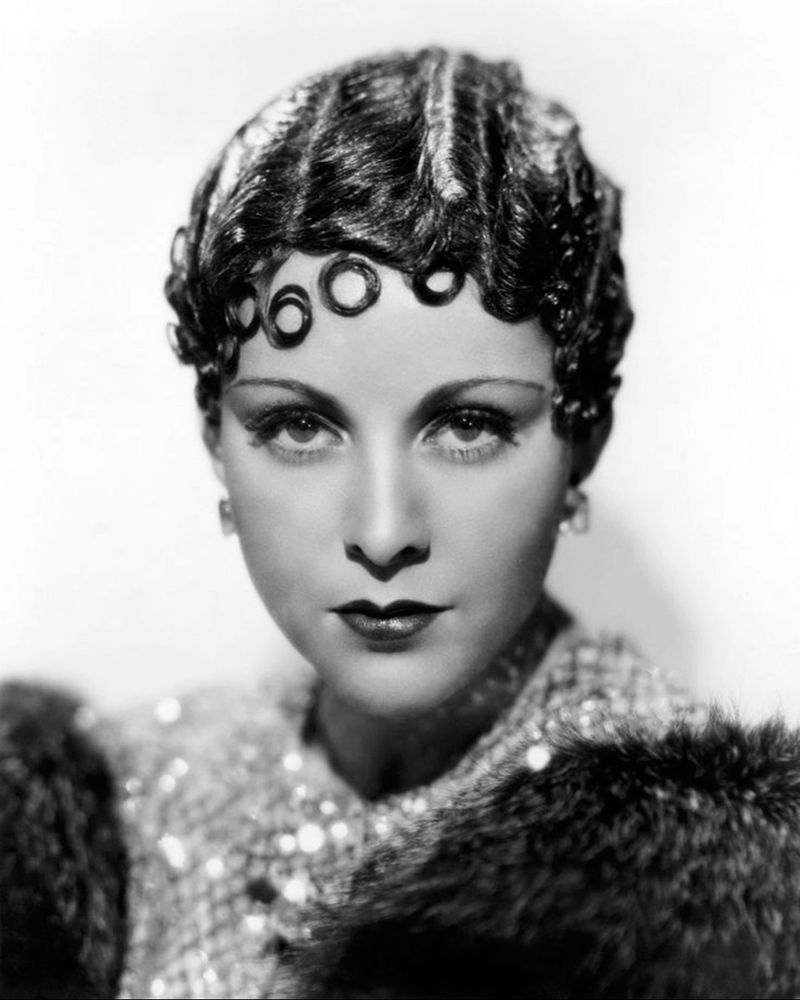
Finger Waves graced the heads of many women in the 1920s, a period known for jazz and flapper culture. The style involves sculpting the hair into ‘S’ shapes, creating a pattern of waves that hug the head.
This elegant look was perfect for the glamorous parties of the Roaring Twenties. Famous flappers like Louise Brooks popularized the style, which exuded sophistication and modernity.
Finger Waves are still celebrated today for their timeless appeal and intricate design. An interesting tidbit: Finger Waves were also a favorite among Hollywood starlets of the silent film era, highlighting their on-screen allure.
Chignon
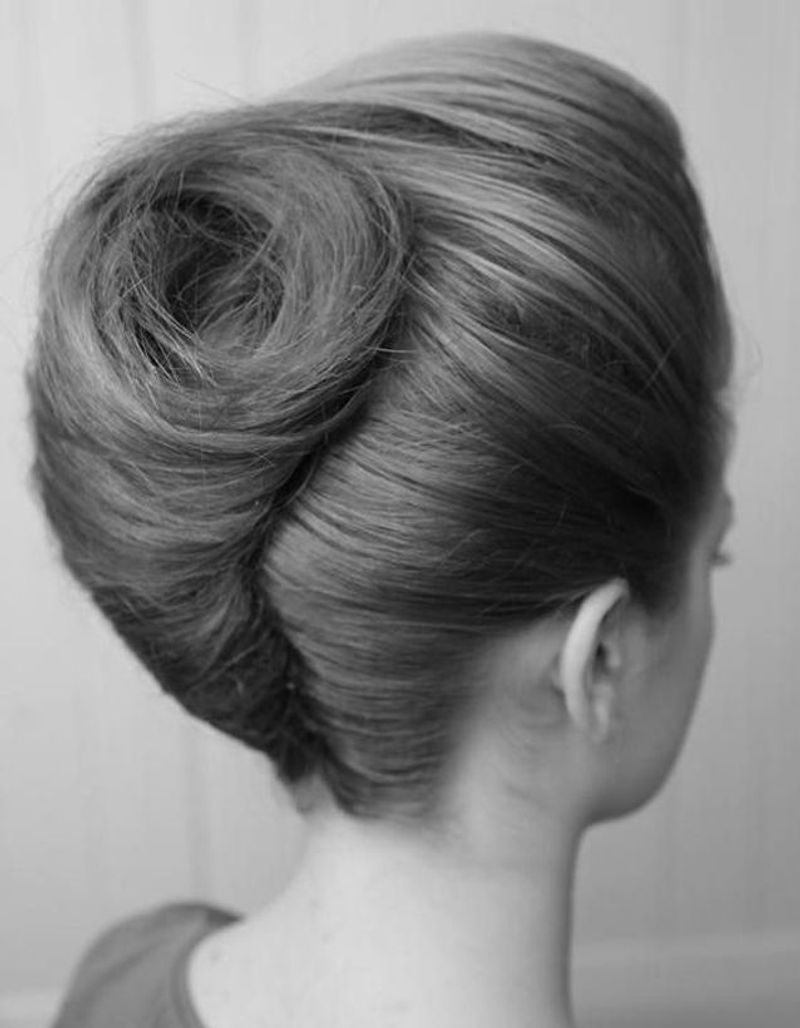
The Chignon, with its origins tracing back to ancient Greece, is a timeless hairstyle that radiates grace and sophistication. Typically worn at the nape of the neck, this bun-like style was a favorite among brides and formal events.
Our grandmothers cherished the Chignon for its simplicity and elegance, often adorning it with hairpins or fresh flowers. It’s a versatile look that complements a variety of face shapes and outfits. Did you know?
The word ‘Chignon’ comes from the French phrase ‘chignon du cou,’ meaning nape of the neck, reflecting its classic placement.
Bouffant

The Bouffant, characterized by its full, puffy crown, became synonymous with glamour in the 1950s and 60s. This voluminous style signified opulence and was often seen at high-society events.
Women like Jackie Kennedy and Elizabeth Taylor popularized the Bouffant, making it a symbol of elegance and sophistication.
The style involved intricate teasing and hair spray to achieve the desired height, often complemented by accessories like tiaras or headbands.
An interesting fact: The Bouffant’s name is derived from the French word ‘bouffer,’ meaning to puff, perfectly capturing its essence.
Marcel Waves

Marcel Waves, elegantly defined by their soft, flowing curves, became a staple in the 1930s. Created using a heated curling iron, this style provided a sleek and polished appearance.
It was named after its inventor, French hairstylist François Marcel, whose technique revolutionized hair fashion. Marcel Waves were beloved for their versatility, complementing both short and long hair.
The style was particularly popular among Hollywood actresses, adding a touch of glamour to their on-screen presence. Fun fact: Marcel Waves were a precursor to today’s curling techniques, showcasing the enduring legacy of this classic style.
Pageboy
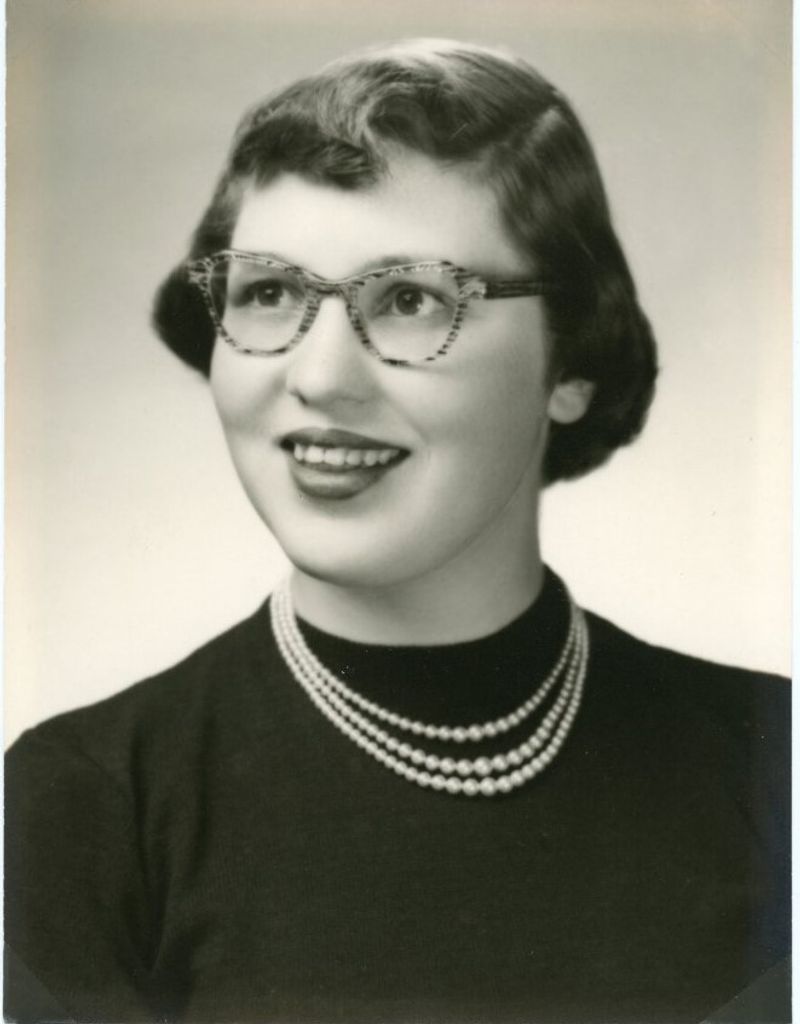
The Pageboy, with its straight lines and inward curls, was a fashionable choice in the 1940s. This haircut, often worn with bangs, evoked a sense of modernity and independence.
Originally inspired by the medieval page boy, the style offered a chic and manageable look for working women of the era. It was seen as a symbol of youthfulness and practicality, appealing to those who wanted a polished yet unfussy appearance.
The Pageboy’s clean lines and simplicity continue to influence contemporary hair trends, demonstrating its timeless charm. Did you know? The style was popularized by celebrities like Mary Tyler Moore.
Pompadour
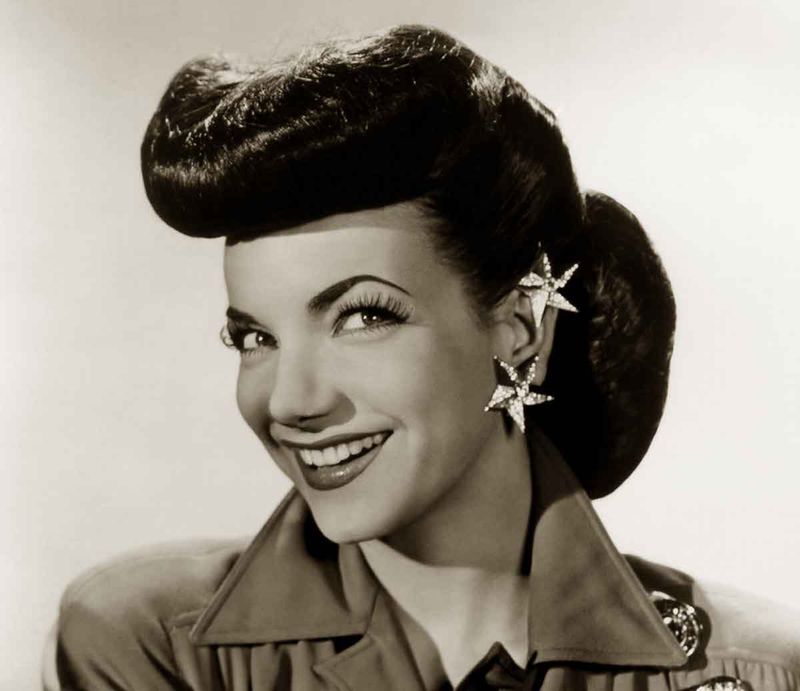
The Pompadour, originally named after Madame de Pompadour, a mistress of King Louis XV, was a style that transcended gender over time. In the 1950s, it became iconic for men, epitomized by Elvis Presley and rock ‘n’ roll culture.
This hairstyle involves sweeping the hair upwards and back, creating a voluminous top. It symbolizes rebellion and charisma, often paired with bold fashion choices.
The Pompadour remains popular today, adapted by both men and women for its striking silhouette. Fun fact: The Pompadour was initially a women’s style in the 18th century before it became a men’s trend in the 20th century.
Bettie Bangs
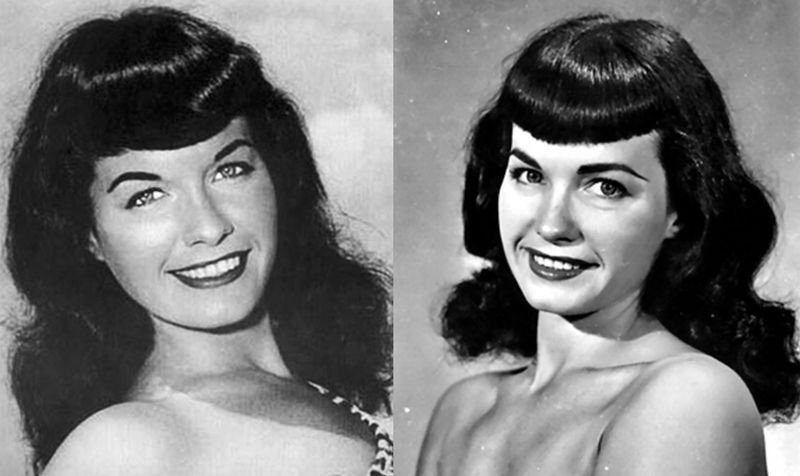
Bettie Bangs, named after the iconic model Bettie Page, embody a playful and edgy style from the 1950s. These short, straight-across bangs were a defining feature of Bettie’s look, exuding confidence and allure.
They became synonymous with pin-up culture and were often paired with voluminous curls or sleek ponytails. This hairstyle challenged conventional beauty norms, offering a bold alternative to traditional looks.
Bettie Bangs continue to inspire modern fashion, embraced by those seeking a unique and daring appearance. Did you know? Bettie Page’s bangs were not just a fashion statement but a symbol of her rebellious spirit and individuality.
Gibson Girl
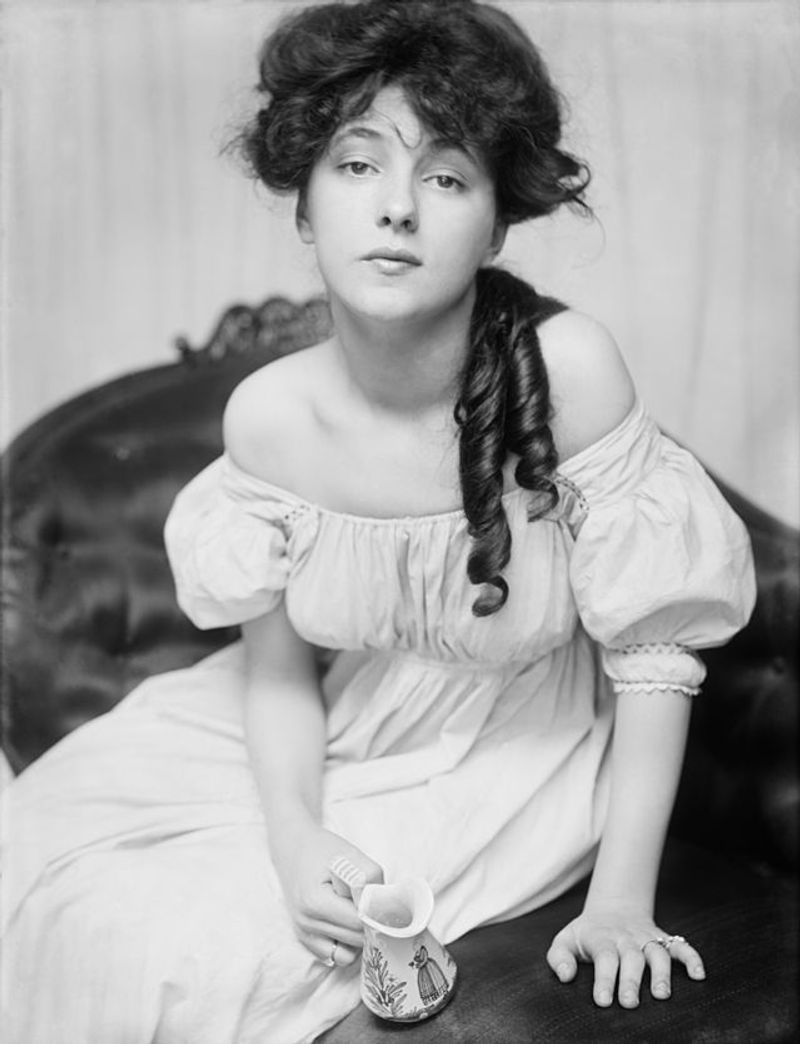
The Gibson Girl, with its piled-up curls and elegant poise, was the epitome of femininity in the early 1900s. Created by illustrator Charles Dana Gibson, this style represented the ideal woman—independent, educated, and sophisticated.
The hair was styled into voluminous waves and loosely pinned up, often adorned with a ribbon or comb. It was a look that combined grace with a touch of rebellion, as women began to challenge societal norms.
An interesting tidbit: The Gibson Girl was more than a hairstyle; it was a cultural icon that influenced fashion, art, and literature of the Edwardian era.
Shingle Bob
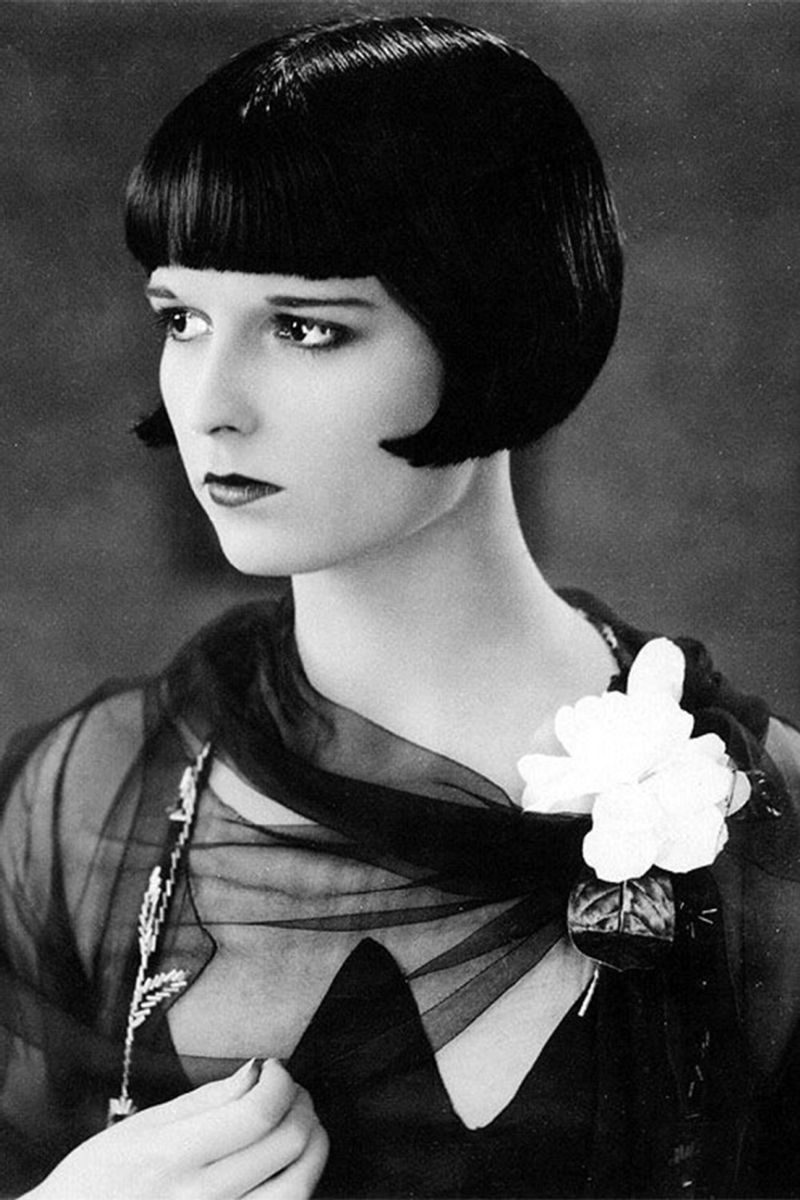
The Shingle Bob, emerging in the 1920s, was a radical departure from long hair norms. This short, tapered cut mirrored the liberated spirit of flapper culture, symbolizing freedom and modernity.
It was a bold statement against traditional female roles, embraced by women seeking independence and self-expression. The style was sleek and easy to maintain, making it perfect for the era’s active lifestyle.
Celebrities like Clara Bow popularized the Shingle Bob, further cementing its place in hair history. Did you know? The style’s name comes from the ‘shingled’ effect created at the nape of the neck, resembling roof shingles.
Bouclé
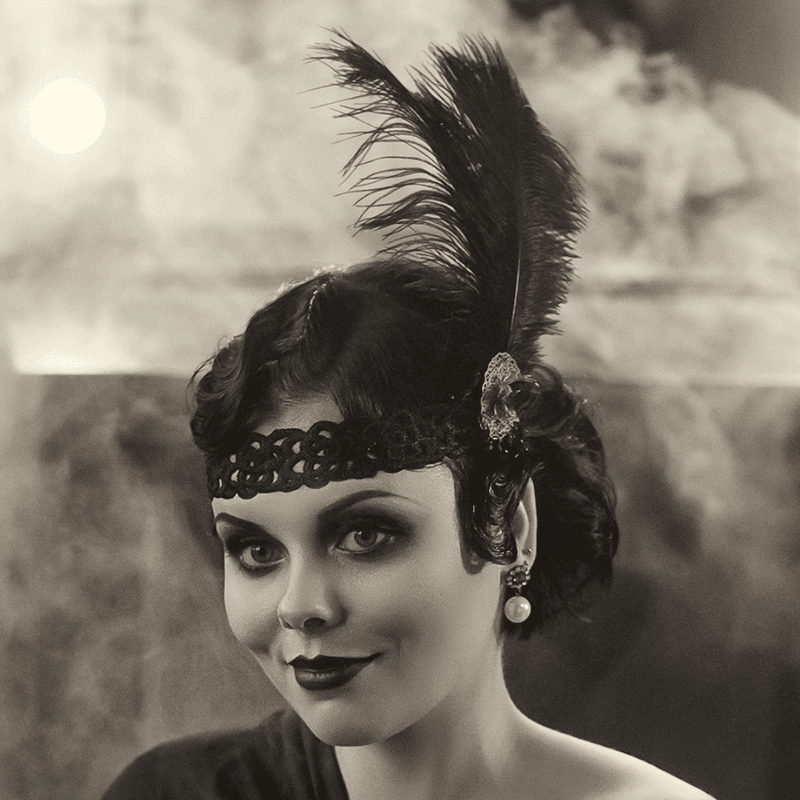
Bouclé, with its soft, curly texture, was a popular choice in the 1940s. This hairstyle exuded elegance and warmth, often achieved with permanent waves or roller sets.
Bouclé allowed women to embrace their natural curls or create them through styling, offering versatility and charm. It was a practical yet stylish option, suitable for both formal and casual occasions.
The name ‘Bouclé’ comes from the French word for loop, reflecting the curl’s distinctive shape. Fun fact: Bouclé styles were a favorite among Hollywood starlets, adding to their glamorous on-screen personas and off-screen allure.
Topknot

The Topknot, with its roots in ancient Asian cultures, is a timeless symbol of elegance and simplicity. This hairstyle involves gathering the hair into a high bun, often secured with decorative pins or combs.
It was a popular choice for formal occasions, conveying a sense of grace and poise. The Topknot’s versatility allowed it to be worn by both men and women, often signifying social status or cultural heritage.
Today, the Topknot remains a chic and practical option, admired for its clean lines and sophisticated appearance. An interesting tidbit: The Topknot was once a mark of the samurai class in Japan.
Milkmaid Braids
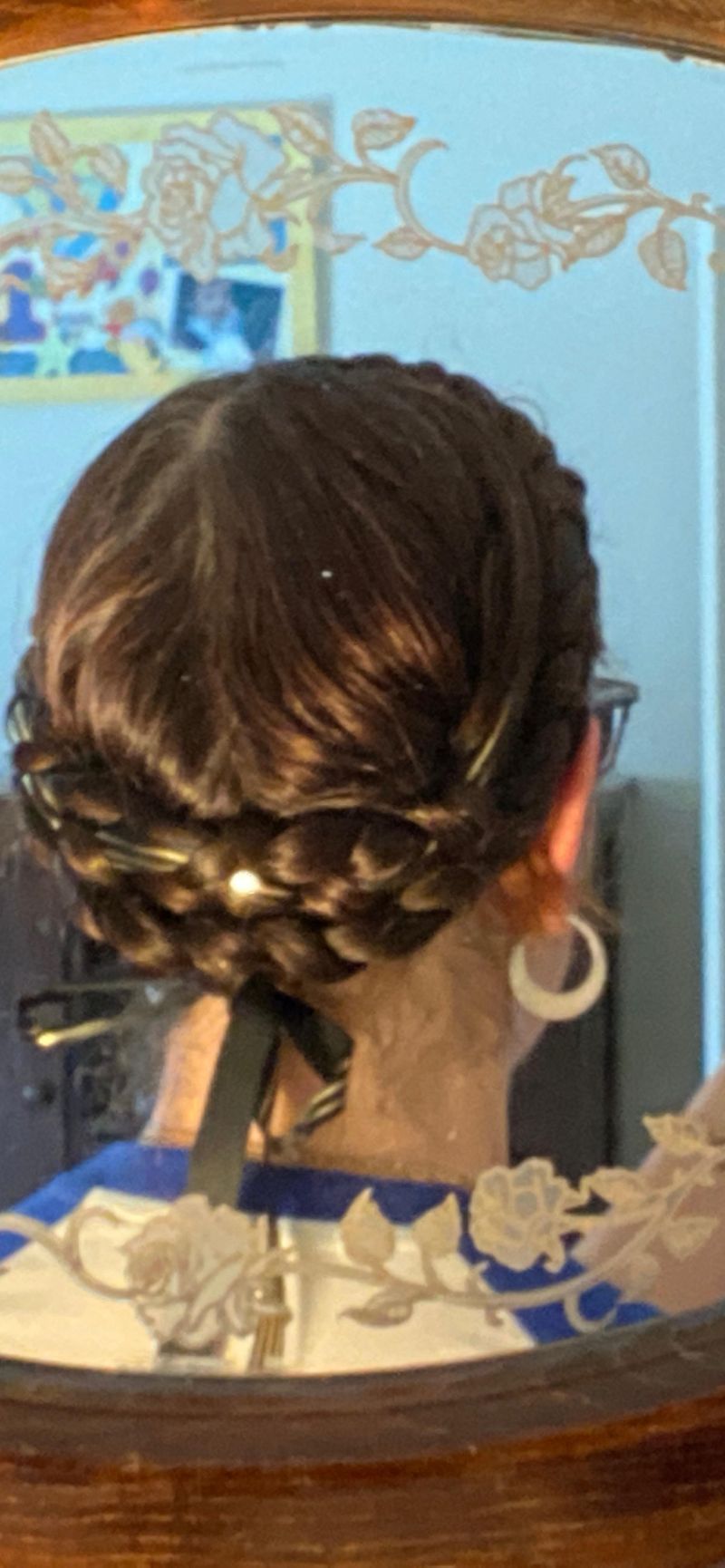
Milkmaid Braids, with their charming, rustic appeal, have been a beloved hairstyle for centuries. This style involves braiding the hair and wrapping it around the head, creating a crown-like effect.
It was traditionally worn by rural women, offering a practical solution for keeping hair tidy while working. The style became fashionable in the 19th century, admired for its simplicity and romantic look.
Milkmaid Braids continue to be popular, often seen in modern interpretations on runways and red carpets. Did you know? This hairstyle was a favorite of Queen Victoria, who admired its modest yet elegant appearance.
Liberty Spikes
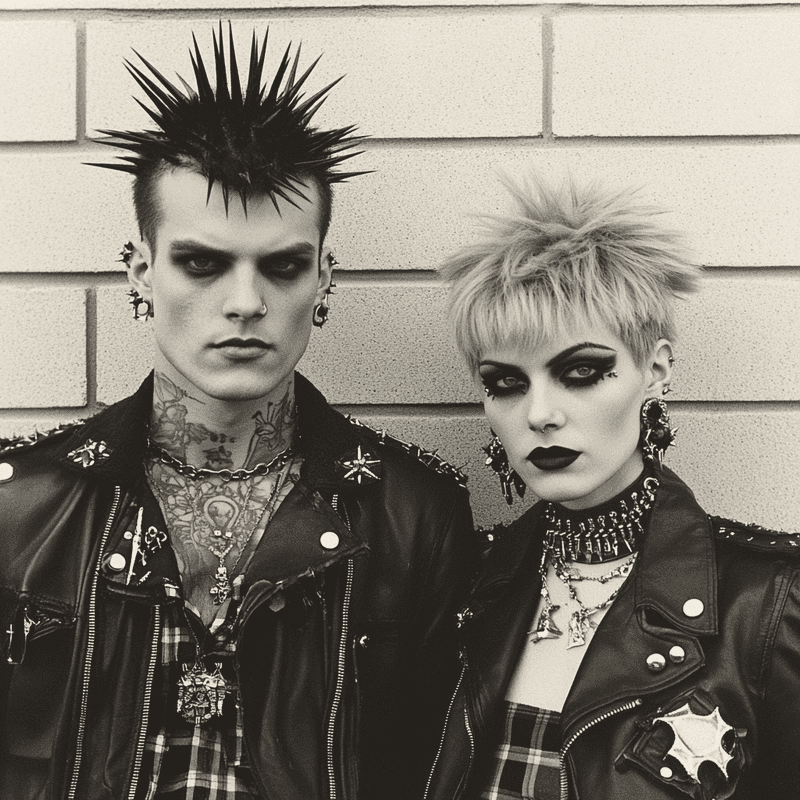
Liberty Spikes, characterized by their bold, upright spikes, became a signature look in the punk rock scene of the 1970s. This daring hairstyle was a symbol of rebellion and non-conformity, challenging societal norms with its striking appearance.
The spikes were often dyed in vibrant colors, adding to the dramatic effect. Liberty Spikes were not just about fashion; they conveyed a message of individuality and defiance.
Today, the style remains an iconic representation of punk culture. Fun fact: The name ‘Liberty Spikes’ draws inspiration from the Statue of Liberty’s crown, reflecting a spirit of freedom and resistance.
Pixie Cut
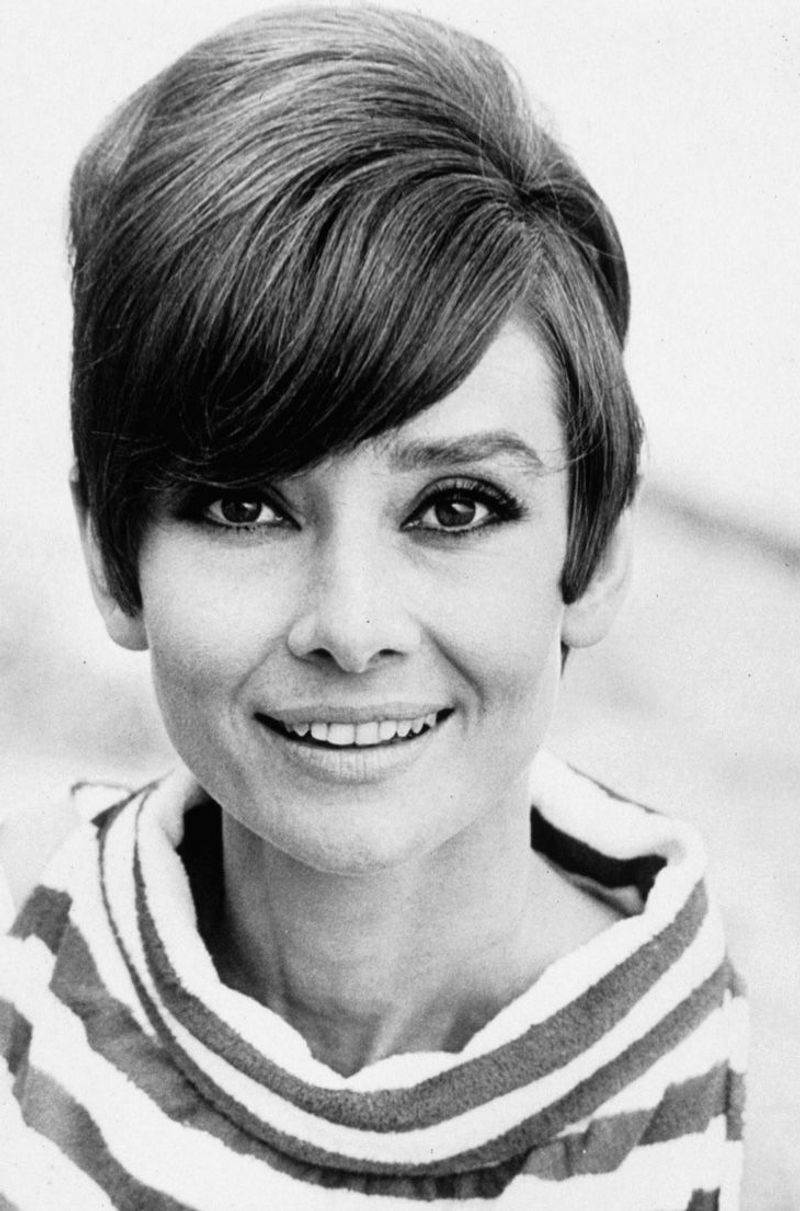
The Pixie Cut, with its short, cropped style, became a symbol of youthful exuberance in the 1960s. Popularized by fashion icons like Twiggy and Mia Farrow, this hairstyle broke away from traditional femininity, embracing a fresh and modern look.
The Pixie Cut was celebrated for its low-maintenance appeal and bold statement, perfect for the era’s dynamic lifestyle. It offered a sense of liberation and empowerment, resonating with women seeking change and innovation.
An interesting tidbit: The Pixie Cut was inspired by the gamine style, emphasizing playful and androgynous aesthetics in a time of cultural revolution.
Afro

The Afro, with its bold and voluminous shape, emerged as a powerful symbol of black pride and identity during the Civil Rights Movement.
This natural hairstyle celebrated African heritage, rejecting societal pressures to straighten hair. It represented a cultural shift towards self-acceptance and empowerment, embraced by activists and celebrities alike.
The Afro was not just a fashion statement; it was a political declaration, challenging beauty standards and inspiring change.
Today, it continues to be a symbol of individuality and pride. Did you know? The Afro’s popularity surged in the 1960s and 70s, becoming a hallmark of the Black Power movement.
